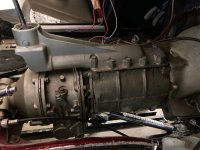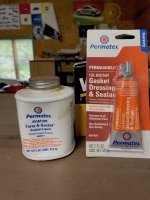nevets
Jedi Knight
Offline
The mounting instructions for a Moss spin-on oil filter adaptor call for Hylomar AF Sealant applied to the gasket and block mating surfaces. Is this necessary? And if so, is there an equivalent gasket sealer that is readily available at a local auto parts store? Also, I noticed that the Moss gasket is made from material thinner than the original, which is a little worrisome...maybe that is why Moss recommends using sealant? Thanks.

 Hi Guest!
Hi Guest!

 smilie in place of the real @
smilie in place of the real @
 Pretty Please - add it to our Events forum(s) and add to the calendar! >>
Pretty Please - add it to our Events forum(s) and add to the calendar! >> 




